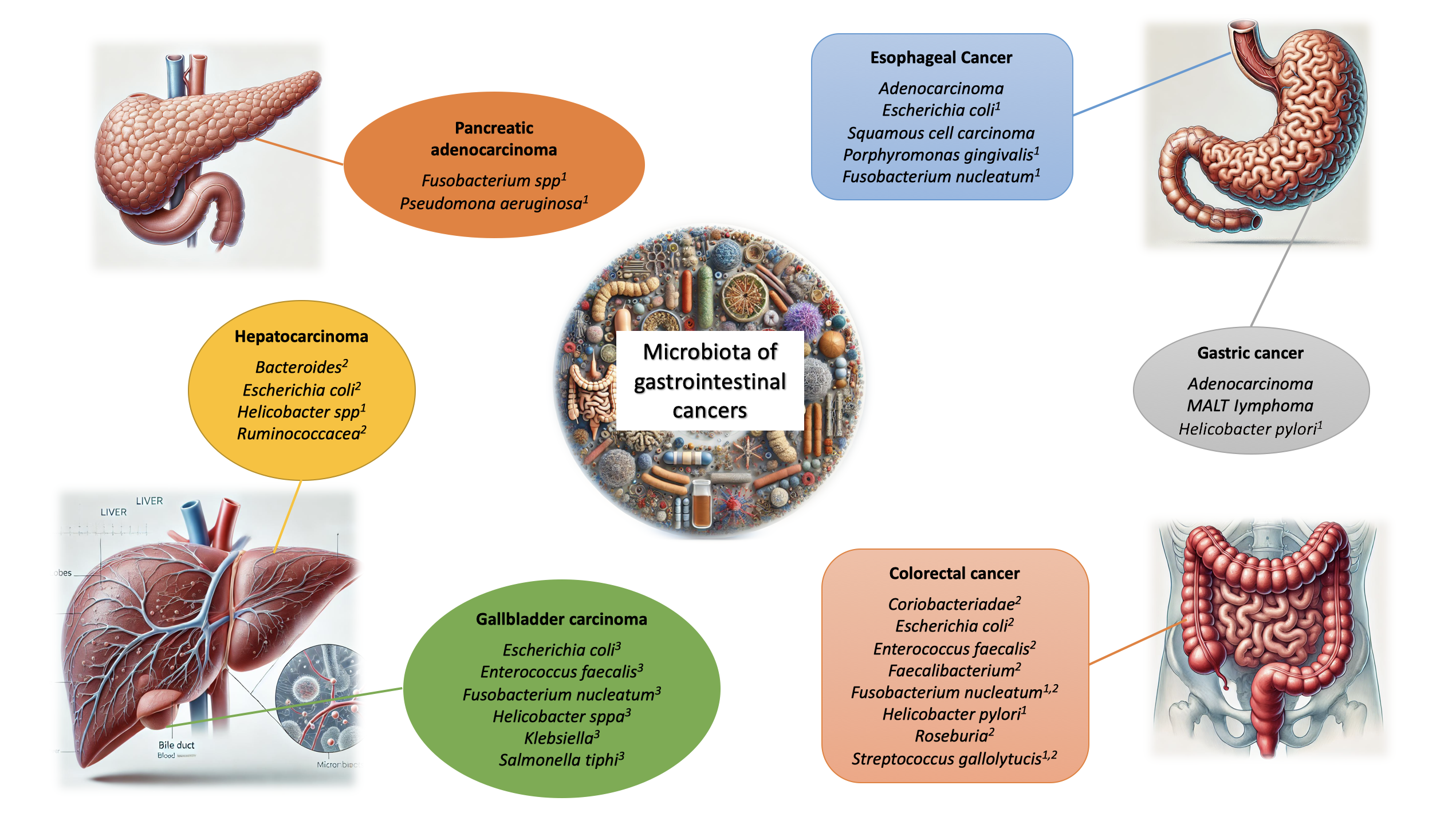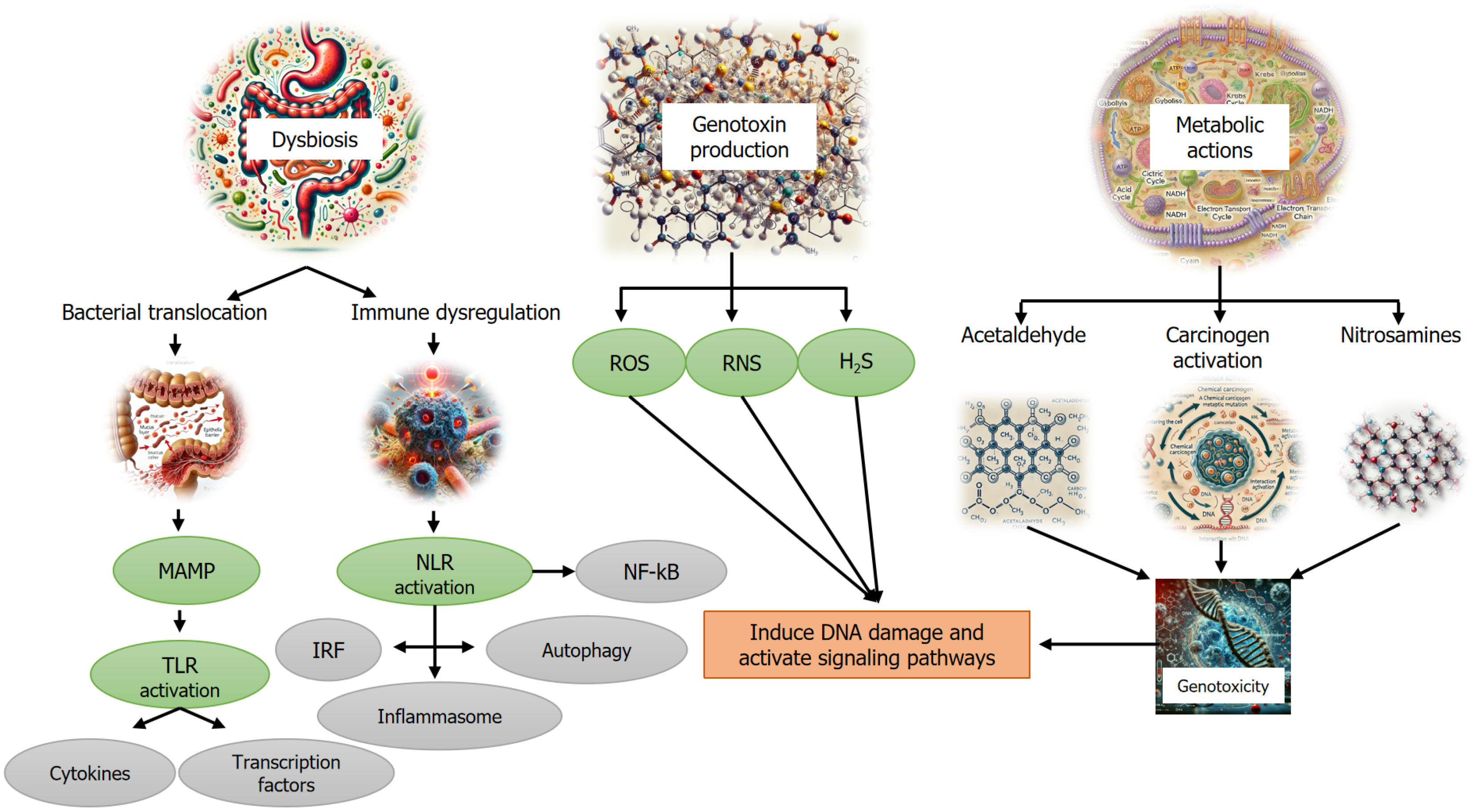Copyright
©The Author(s) 2025.
World J Clin Oncol. Oct 24, 2025; 16(10): 107877
Published online Oct 24, 2025. doi: 10.5306/wjco.v16.i10.107877
Published online Oct 24, 2025. doi: 10.5306/wjco.v16.i10.107877
Figure 1 Predominant bacterial microbiota associated with gastrointestinal cancers.
Microbiota identified from patients with gastrointestinal tract cancers. 1Cancerous tissues; 2Stool samples; 3Bile secretions.
Figure 2 The microbiome contributes to carcinogenesis through various mechanisms.
Dysbiosis can promote cancer development through bacterial translocation and immune system disruption. In bacterial translocation, microorganism-associated molecular patterns activate Toll-like receptors, triggering cytokine production and transcription factor activation. On the other hand, immune dysfunction involves the activation of nucleotide-binding oligomerization domain-like receptors, which stimulate multiple signaling pathways, leading to the formation of inflammasomes and/or the activation of nuclear factor kappa B, stress kinases, interferon regulatory factors, inflammatory caspases, and autophagy mechanisms. Additionally, certain genotoxins, such as reactive oxygen species, reactive nitrogen species, and hydrogen sulfide, released by specific bacteria, can have harmful effects. Moreover, bacterial metabolic processes can activate toxins like acetaldehydes and nitrosamines, resulting in a genotoxic impact that may contribute to carcinogenesis. MAMP: Microorganism-associated molecular patterns; TLR: Toll-like receptors; NLR: Nucleotide-binding oligomerization domain-like receptor; NF-κB: Nuclear factor kappa B; IRF: Interferon regulatory factor; ROS: Reactive oxygen species; RNS: Reactive nitrogen species; H2S: Hydrogen sulfide.
- Citation: Pacheco-Barcia V, Mariño-Mendez A, Hernandez-Jimenez E, Jimenez-Fonseca P, Muñoz Martín AJ, Custodio-Cabello S, Palka-Kotlowska M, Gonzalez-Diaz I, Cabezon-Gutierrez L. Gut microbiome and nutritional strategies in gastrointestinal cancers: Clinical implications and therapeutic perspectives. World J Clin Oncol 2025; 16(10): 107877
- URL: https://www.wjgnet.com/2218-4333/full/v16/i10/107877.htm
- DOI: https://dx.doi.org/10.5306/wjco.v16.i10.107877














